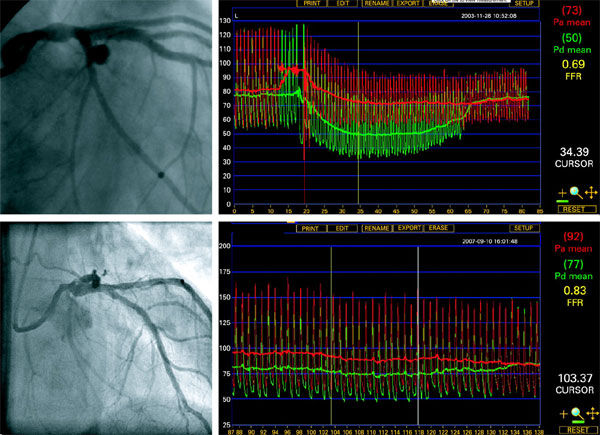FFR (Fractional Flow Reserve) is a measurement obtained during cardiac catheterization, where a thin wire with a pressure sensor is threaded through the blood vessels to the site of the blockage. A value of less than 0.80 indicates significant narrowing and suggests the need for intervention, such as stenting or bypass surgery, to improve blood flow and reduce the risk of adverse cardiac events.
RFR, on the other hand, is a newer technique that uses the same pressure wire but provides a measurement without the need for the administration of hyperemia-inducing medications. It provides a ratio similar to FFR, with values less than 0.89 indicating significant stenosis.
Both FFR and RFR help guide decision-making in determining whether a blockage is causing a significant reduction in blood flow and whether intervention is necessary. These measurements assist cardiologists in identifying which lesions require treatment, optimizing patient care, and reducing the number of unnecessary interventions.
RFR, on the other hand, is a newer technique that uses the same pressure wire but provides a measurement without the need for the administration of hyperemia-inducing medications. It provides a ratio similar to FFR, with values less than 0.89 indicating significant stenosis.
Both FFR and RFR help guide decision-making in determining whether a blockage is causing a significant reduction in blood flow and whether intervention is necessary. These measurements assist cardiologists in identifying which lesions require treatment, optimizing patient care, and reducing the number of unnecessary interventions.


